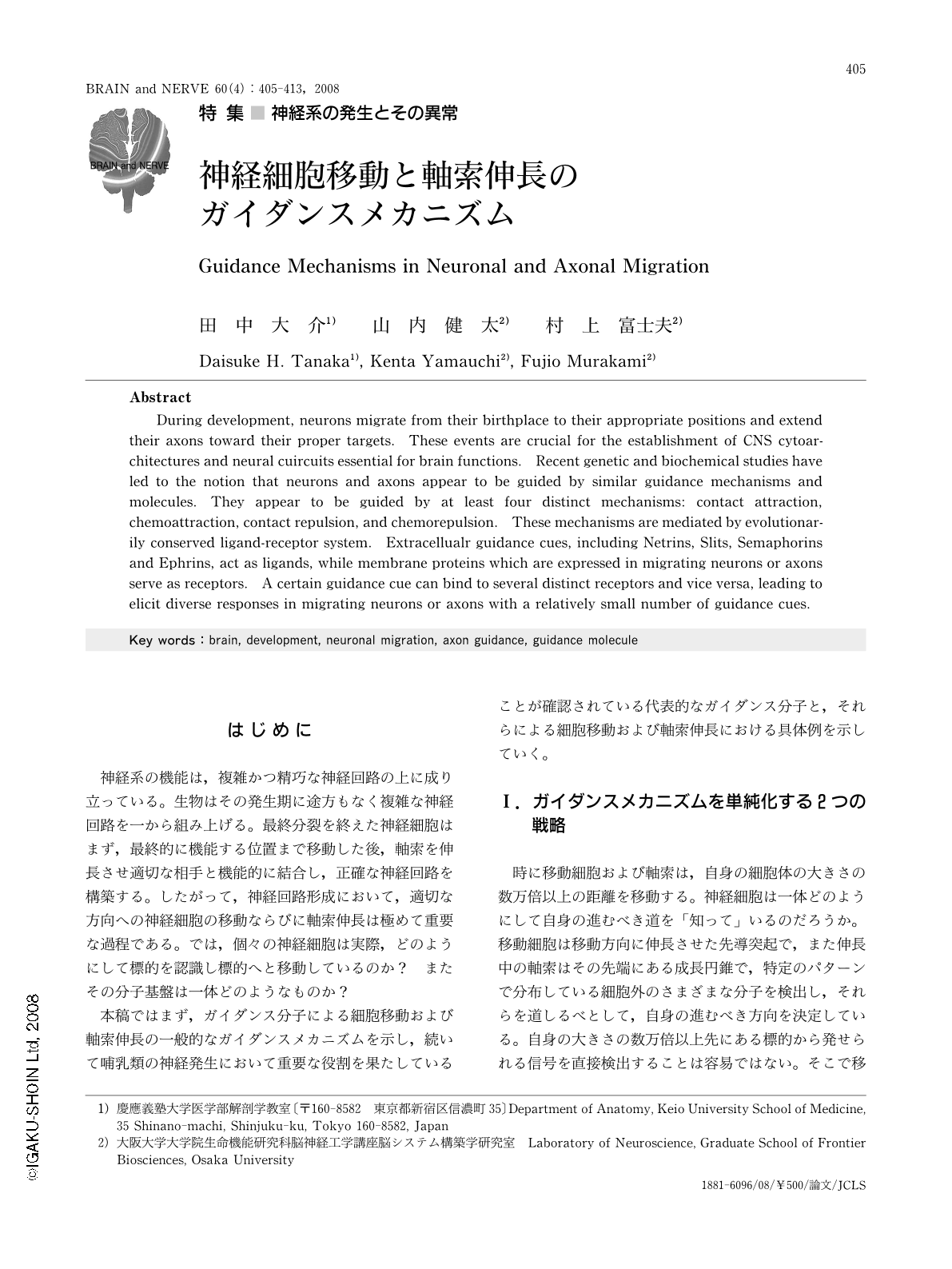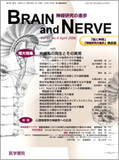Japanese
English
- 有料閲覧
- Abstract 文献概要
- 1ページ目 Look Inside
- 参考文献 Reference
はじめに
神経系の機能は,複雑かつ精巧な神経回路の上に成り立っている。生物はその発生期に途方もなく複雑な神経回路を一から組み上げる。最終分裂を終えた神経細胞はまず,最終的に機能する位置まで移動した後,軸索を伸長させ適切な相手と機能的に結合し,正確な神経回路を構築する。したがって,神経回路形成において,適切な方向への神経細胞の移動ならびに軸索伸長は極めて重要な過程である。では,個々の神経細胞は実際,どのようにして標的を認識し標的へと移動しているのか? またその分子基盤は一体どのようなものか?
本稿ではまず,ガイダンス分子による細胞移動および軸索伸長の一般的なガイダンスメカニズムを示し,続いて哺乳類の神経発生において重要な役割を果たしていることが確認されている代表的なガイダンス分子と,それらによる細胞移動および軸索伸長における具体例を示していく。
Abstract
During development, neurons migrate from their birthplace to their appropriate positions and extend their axons toward their proper targets. These events are crucial for the establishment of CNS cytoarchitectures and neural cuircuits essential for brain functions. Recent genetic and biochemical studies have led to the notion that neurons and axons appear to be guided by similar guidance mechanisms and molecules. They appear to be guided by at least four distinct mechanisms: contact attraction, chemoattraction, contact repulsion, and chemorepulsion. These mechanisms are mediated by evolutionarily conserved ligand-receptor system. Extracellualr guidance cues, including Netrins, Slits, Semaphorins and Ephrins, act as ligands, while membrane proteins which are expressed in migrating neurons or axons serve as receptors. A certain guidance cue can bind to several distinct receptors and vice versa, leading to elicit diverse responses in migrating neurons or axons with a relatively small number of guidance cues.

Copyright © 2008, Igaku-Shoin Ltd. All rights reserved.


